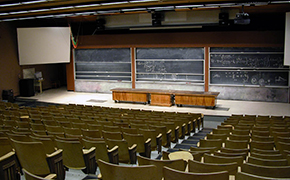This Course at MIT pages are part of the OCW Educator initiative, which seeks to enhance the value of OCW for educators.
Course Overview
The Problem Solving Help Videos provided in this supplemental resource offer step-by-step solutions to sample problems typically encountered in 8.03 Physics III: Vibrations and Waves, an undergraduate-level course in which students learn about harmonic motion, superposition, forced vibrations and resonance, coupled oscillations, normal modes, and other topics.
The Instructor Insights on this page are shared by Professor Wit Busza, who has taught Physics III and its associated recitation sessions many times. At MIT, recitations are opportunities for students to work through problems related to lecture content. Professor Busza’s insights focus on his approach to problem solving, strategies for supporting students as they solve problems, and common sources of confusion for students in the process of problem solving.
Course Outcomes
Course Goals for Students
- Understand that almost all natural phenomena involve waves and vibrations
- Learn equations that, although identical, can be used to describe very different phenomena
- Be able to distinguish how the physics differs in each of these cases
- Apply understanding of laws of nature in problem solving
Possibilities for Further Study/Careers
8.03 Physics III is the third course in a sequence of four physics courses. It prepares students to take 8.04 Quantum Physics I.
Why do we solve problems? We don’t often explain to students why we solve problems. But shouldn’t we? After all, when you really stop to think about it, the answer to this question is not at all trivial.
—Wit Busza
In the following pages, Professor Wit Busza describes his problem solving pedagogy.
- Explaining Why We Solve Problems
- Articulating the Two Parts of Physics Problems
- Coming Full Circle in Problem Solving
- Helping Students Solve Problems
- Common Sources of Confusion
Curriculum Information
Prerequisites
Requirements Satisfied
GIR ![]()
Offered
Every fall and spring semester
How Student Time Was Spent
During an average week, students are expected to spend 12 hours on the course, roughly divided as follows:
Lecture
Typically meets 2 times per week for 1.5 hours per session; usually about 27 sessions total.
Recitation
Typically involves the application of lecture concepts to problem solving.
Preparation
Typically involves reading and homework assignments.
Student Information

Breakdown by Year
Mostly sophomores
Breakdown by Major
Typically physics majors


 Room 1 of 1
Room 1 of 1 